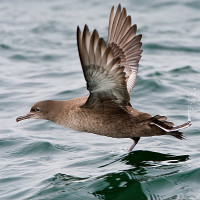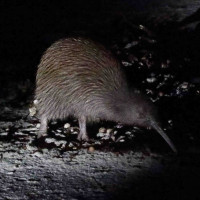Opis
Besides the many Tītī islands around Rakiura, Sooty Shearwater also have a breeding colony at Ackers Point, which is just a 5 km walk from Oban's centre. During the breeding season from late November to April. At the platform at the lighthouse you get a wide view of the surrounding sea and can observe them aggregate just before sunset. With darkness setting in, you can see and hear them crash into the forest. With some luck you may even find some close to the path (do not blind them with your light; preferably only use red light).
Shy Albatross, Buller's Albatross, and other seabirds can often be seen in the bay that you can overlook from several viewpoints along the out-and-back track to Ackers Point. In the late evening, you may see Little Penguin waiting to come in and on your walk in the dark you stumble into some. There are also Southern Brown Kiwi around in the area. On the track you are likely to see New Zealand Kaka, Red-crowned Parakeet, and more forest birds.
Szczegóły
Dostęp
From the centre of Oban, follow Elgin Terrace and Leask Bay Road along the Southern side of Halfmoon Bay for roughly 2 km all the way to end to the trailhead of Ackers Point Track. From there it is about a 1 km walk to Ackers Point Lighthouse on a track through bushy forest. There are toilets at the start of the track. Return is on the same way. Plan with around 3 hours and don't forget to bring a light, preferably a red one, with you.



 - Thalassarche cauta.jpg)